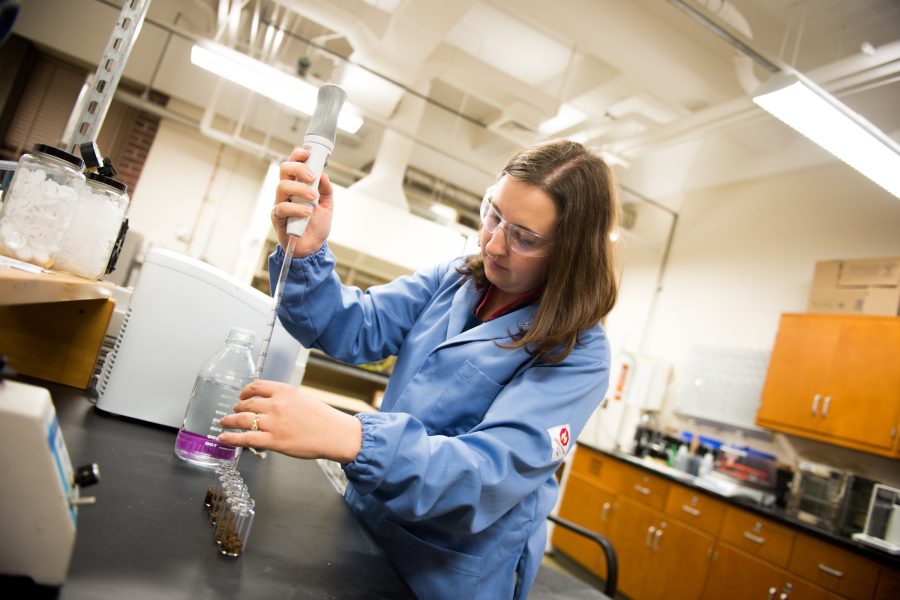
High yields. A deep root system that prevents soil erosion and allows for minimal irrigation. The ability to pull large amounts of carbon out of the air and sequester it in the soil. Beneficial effects on wildlife, pollination, and water quality. Perennial grasses, such as switchgrass and elephant grass, are wonderful in many ways and especially promising biofuel feedstocks. But that promise, a team of researchers discovered, may evaporate during a drought.
“The characteristics of any living organism are linked to their genetics and the environment they experience during growth,” says Rebecca Ong, an assistant professor of chemical engineering at Michigan Technological University. “Bioenergy production is no different. It’s a chain where every link, including the feedstock characteristics, influences the final product—the fuel.”
Ong is both a chemical engineer and a biologist. She holds a unique perspective on how the bioenergy system fits together, which comes in handy, especially now, in light of a recent puzzling discovery.
“Plants have lower biomass yields during a drought. You understand this when you don’t need to mow your lawn after a dry spell,” she explains. “The same is true with switchgrass. Besides the expected effect on crop yields, we were completely unable to produce fuel from switchgrass—using one of our standard biofuel microbes—grown during a major drought year.”
“At the lab scale this is an interesting result. But at the industrial scale, this could potentially be devastating to a biorefinery,” she says.

Ong, her research team, and colleagues within the Great Lakes Bioenergy Research Center (GLBRC), a cross-disciplinary research center led by the University of Wisconsin–Madison, are making efforts to understand, pulling in researchers from across the production chain to study the problem.
Ong is the only Michigan Tech faculty member in the GLBRC. “Our team was able to identify some of the compounds formed in the plant in response to drought stress, contributing to the inhibition. But plant materials are very complex. We’ve only scratched the surface of what is in there. We have much more to learn.”
The first step, she says, is to understand what inhibits fuel production. “Once we know that, we can engineer solutions: new, tailor-made plants with improved characteristics, as well as modifications to processing, such as the use of different microbes, to overcome these issues.”
Ong points out that in the U.S., gasoline is largely supplemented with E10 ethanol, derived from sugars in corn grain. However renewable fuels can be produced from any source of sugars—including perennial grasses, which if planted on less productive land do not conflict with food production.
“Ultimately, if we are to replace fossil energy in the long term, we need a broad alternative energy portfolio,” says Ong. “We need industry to succeed. We are engaging in highly collaborative research to ensure that happens.”